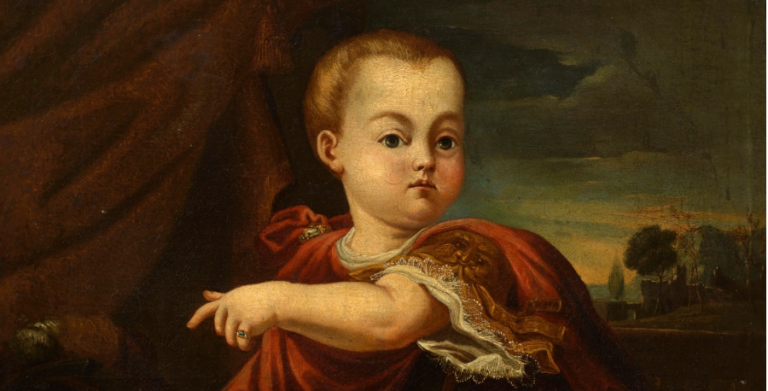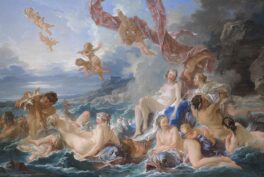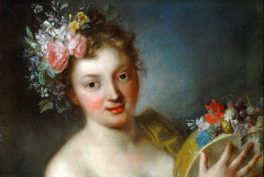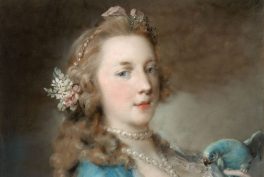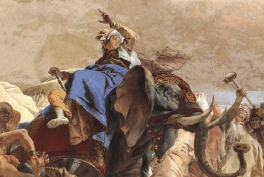Ivan VI of Russia (Ivan Antonovich) was the youngest Russian tsar in history. He was proclaimed emperor when only two months old, and his 22-year-old mother, Grand Duchess Anna Leopoldovna, took the title of Regent; but, barely one year of Ivan’s reign had passed before Tsarevna Elisabeth Petrovna (the daughter of Peter the Great) seized the throne.The next years of Brunswick family exile were truly horrible. The little Ivan was kidnapped from his parents and later became known as the “Russian Man in the Iron Mask.” The life story of Ivan Antonovich brings up a topic of kidnapping and violence towards children: a very important topic for which to raise awareness!
The Baby Emperor
On August 23, 1740, both Peter and Paul and Schlisselburg fortresses’ cannons were firing, informing the citizens of St. Petersburg of the birth of the heir to the Russian throne — Ivan Antonovich. He was the first child of Grand Duchess Anna Leopoldovna (originally princess Anna of Mecklenburg-Schwerin) and German Duke Anthony Ulrich of Brunswick-Lüneburg. Princess Anna was the only niece of the childless Empress Anna of Russia, and the only granddaughter of Tsar Ivan V. Tsessarevna Elisabeth Petrovna was the only surviving child of Peter the Great, and she had a reputation of being a spoiled and easygoing lady interested in love affairs and fashion.
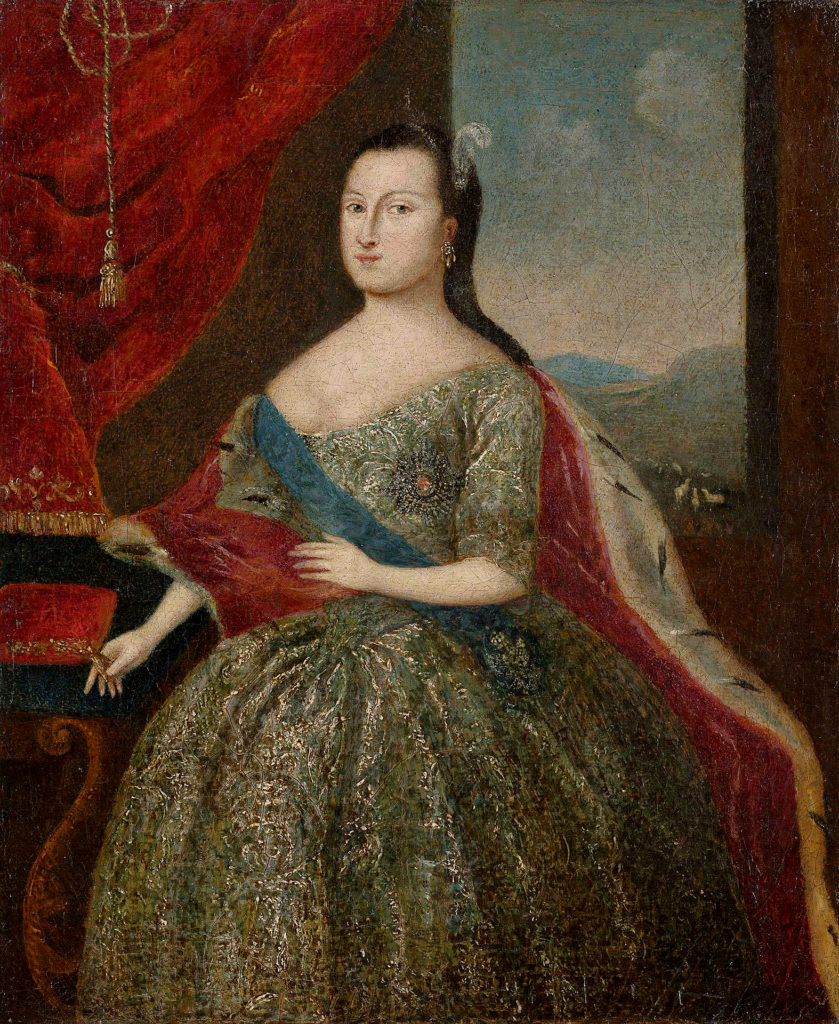
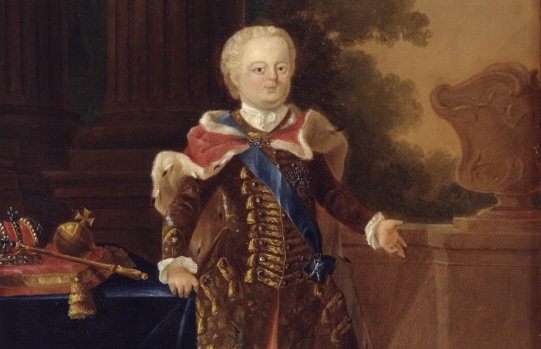
Interestingly, and shockingly, Empress Anna decided to give the Russian crown to her niece’s son eight years before Ivan’s birth! You may think that a ridiculous order, but who could disagree with the monarch’s will? Without a doubt, the Empress wanted her descendants to inherit the Russian throne, which is why she enacted such a strange decree. After her death in October 1740, the baby Ivan became Emperor Ivan VI of Russia. It was a unique occasion! The images of the baby emperor were distributed all over Europe.
How to Depict the Baby Emperor
After the imprisonment of the Brunswick family, the self-proclaimed empress, Elisabeth I of Russia, ordered the destruction of any image or even reference to Ivan Antonovich. Subsequently, today we know of only a few true portraits of Ivan VI of Russia. This also explains the reason why contemporary artists denied their relations to portraits of Ivan.
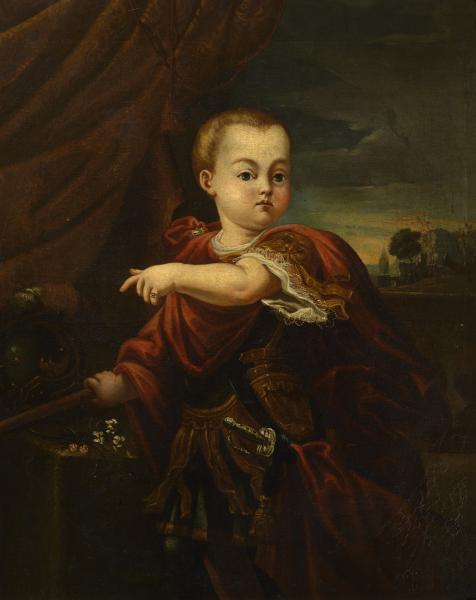
Pay close attention to the appearance of this “newborn” child. He looks much older than we would expect! The pose and clothes are very unusual for a baby. Ivan is dressed up with a cuirass and a saber hanging on his belt; a helmet can also be seen in the background.
It Is NOT Ivan VI of Russia!
Because of the mystery that shrouded Ivan’s life, some portraits of other Romanov children are garbled. For instance, this portrait of Tsarevich Peter Petrovich has been falsely said to be Ivan Antonovich!
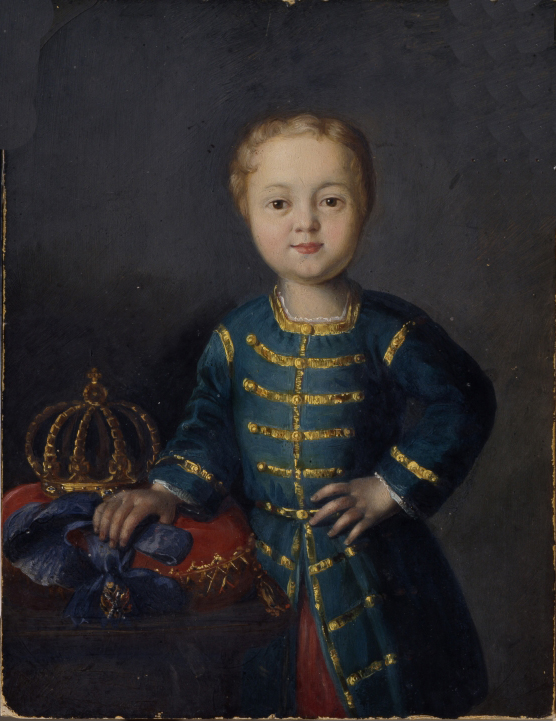
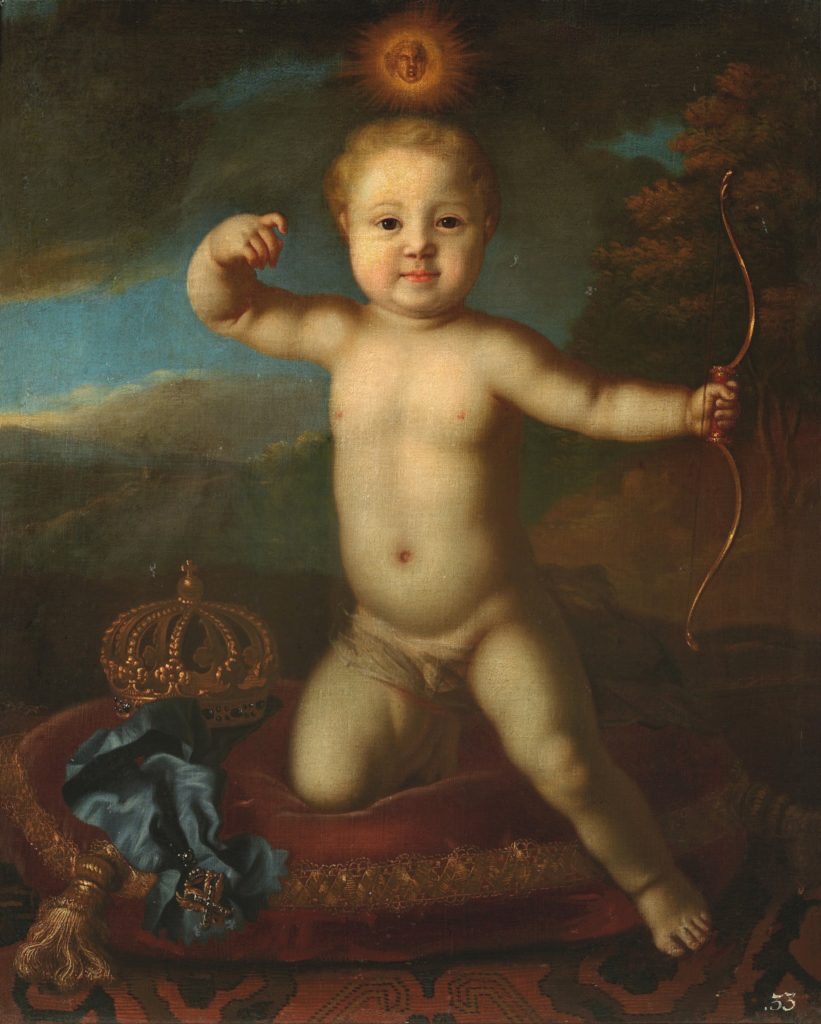
Peter Petrovich (1715-1719) was the first son of Peter the Great and Catherine I of Russia, brother of Elisabeth I of Russia. Unfortunately, at the age of four, the little boy died. Nonetheless, there are portraits of him that are portrayed as Ivan Antonovich. And yet, just comparing these two portraits, it is clear that the two faces are the same! Both artworks are of the same subject-model but two different royals!
Another portrait mistakenly attributed as Ivan Antonovich is a Portrait of a Grand Duke Alexander Pavlovich in Childhood, and not only because of the resemblance of royal children. In this portrait, Alexander holds a rattle which was intended for Ivan in 1740 on Empress Anna’s order. This is a family status jewel, not a toy, as one might assume.
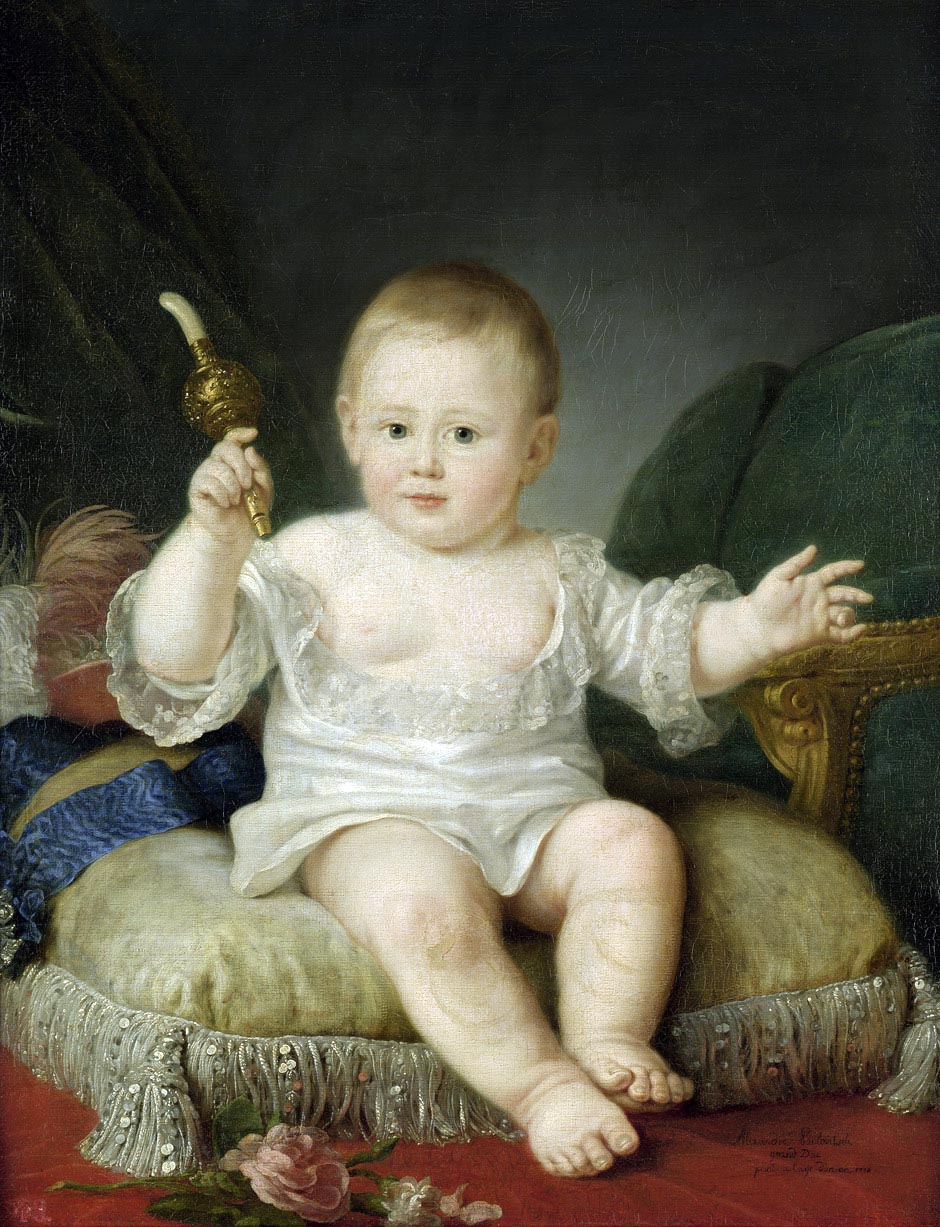
This exquisite item has been passed down in the Romanov family through the male line all the way to the children of the last emperor. It survived, and today is stored in the historical hall of the Diamond Fund. The baby sits on a velvet pillow, and to the right of him is the Order of St. Andrew, which was awarded to the heirs born on the fact of their birth.
The Last Portrait in Ivan Antonovich’s Lifetime
After Ivan’s deposition, Empress Elisabeth I had the intent to banish Ivan Antonovich and his family to Brunswick, Germany. However, her advisors had another point-of-view; they assured Elisabeth that she was in danger as long as the Brunswick family was abroad. Consequently, Ivan and his parents and siblings were locked away in five different prisons. The first one was the Dünamünde castle, near Riga. In 1743, the Brunswick family was imprisoned in this fortress, but conditions of their isolation were almost pampering.

Most likely, the initiators of this Portrait of the Emperor Ivan Antonovich were his parents, his mother in particular. In this painting, you can see a baby sitting next to a cat. The little boy is clothed in a red Russian dress. His right hand is raised. Above it is the royal coat of arms and a cartouche with the inscription “Ioann Antonovich.” The baby’s left hand holds the cat by the ear. Below the cat is an inscription in German: “Iohann Ulrich Feb. 23 1743 DUNA MUNDE Fecil.R.AE.”
Through 1990-2001, complex research shows that the original portrait was made in the 18th century but restored later. The baby’s face and the location of the cat were originally distorted and without essential alterations. This is in contrast to the captions on the cartouche and the lower caption in German, which were added much later.
Ivan VI of Russia in Prison
When Ivan Antonovich turned four, he was transferred to Kholmogory (a town near Arkhangelsk) and separated from his family completely. An officer, Major Korff, guarded the little boy during the trip. Surprisingly, in the 19th century, this major’s offspring and a historian, Modest Korff, published the book The Brunswick Family. This book is the most complete set of documents related to Ivan VI of Russia and his family we have to day.
According to facts from this publication, Ivan was brought up by peasants and officers who taught him to read and write. Through this, he was able to learn religious texts by heart. As a result, Ivan had primary education, but his outlook and manners were close to peasants’. Namely, he believed in witchcraft and superstitions, and he did not know much about free peoples’ lives.
At Schlisselburg Fortress
In 1756, the 16-year-old Ivan was transferred to Schlisselburg fortress – the Russian Bastille. There, the conditions of his isolation became much more strict. From that time on, Ivan was called Grigory or arestant (prisoner), and he was forbidden to write. If that were not enough, two guards got the order to insult and treat the 16-year-old Ivan with violence. Despite all hardships, Ivan insisted on his rights stubbornly:
“How dare you shout at me! I am the prince of this empire and your Gosudar!”
Ivan VI of Russia, from the officer’s report. July 20, 1759.
*Gosudar– meaning sovereign
The Russian government wondered if Ivan was insane. The officers responded that Ivan Antonovich had hysterical fits from time to time. On the other hand, the guards’ commander wrote that officers bothered Ivan constantly, provoking him to swear and get into fights. But the government did nothing to avoid this dereliction of human rights; instead, it indulged in outrages on the young prince!
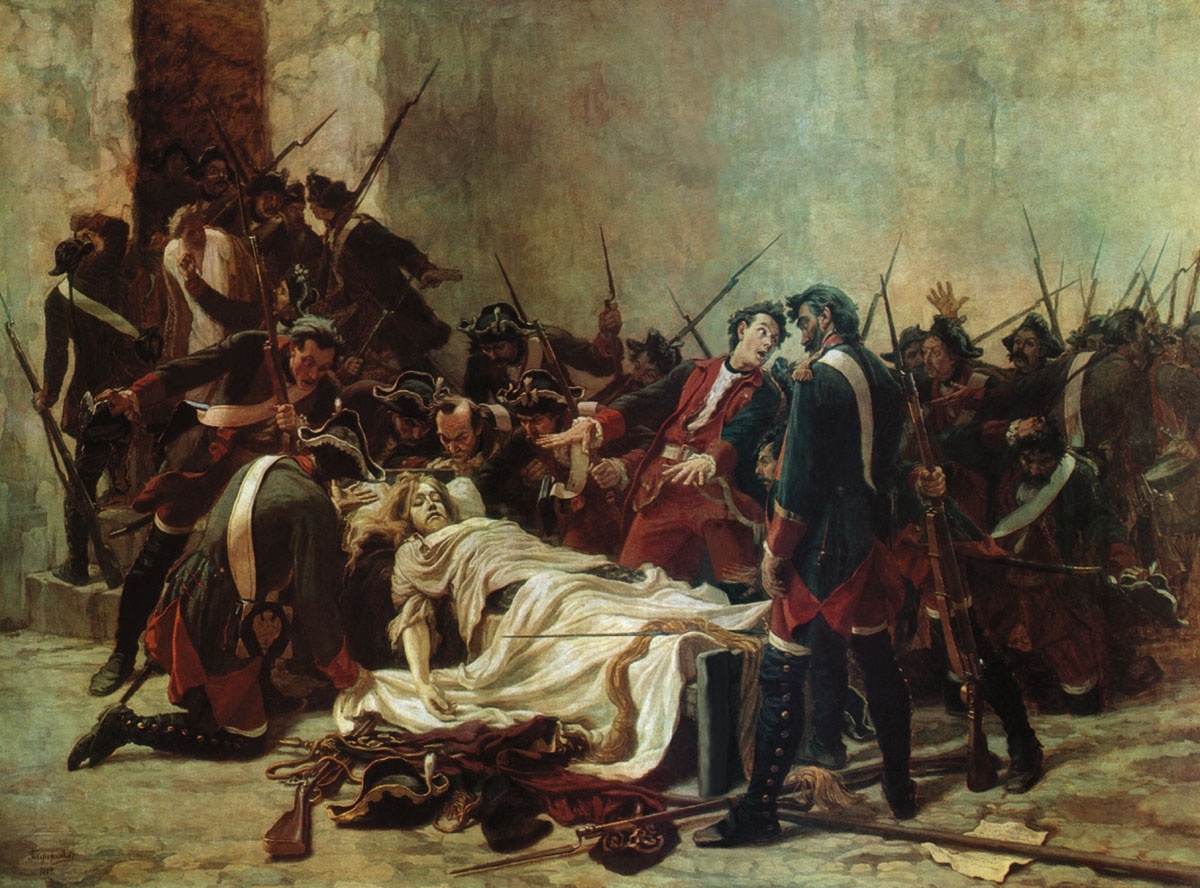
On June 16, 1764, Ivan Antonovich was murdered by his guards during an attempt at being freed. During this time, his father and siblings lived at Kholmogory (Princess Anna died in 1746 at age 28). General Melgunoff, a visitor to the family after Ivan’s death, in response to Catherine the Great‘s request on updates of the family, stated that Ivan’s siblings lived peacefully and in friendship: even though they often needed the most necessary things. Despite the isolation and hardships of imprisonment, members of the Brunswick family were kind, shy, and sincere.
This is a heartbreaking story of the forgotten Brunswick family, whose tragic lives are so similar to the last Romanovs’.
Irina Marinova
